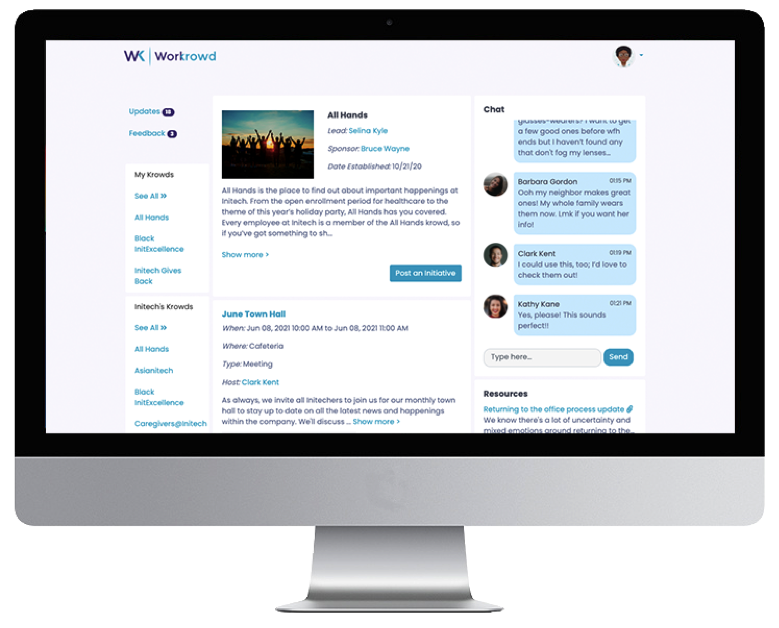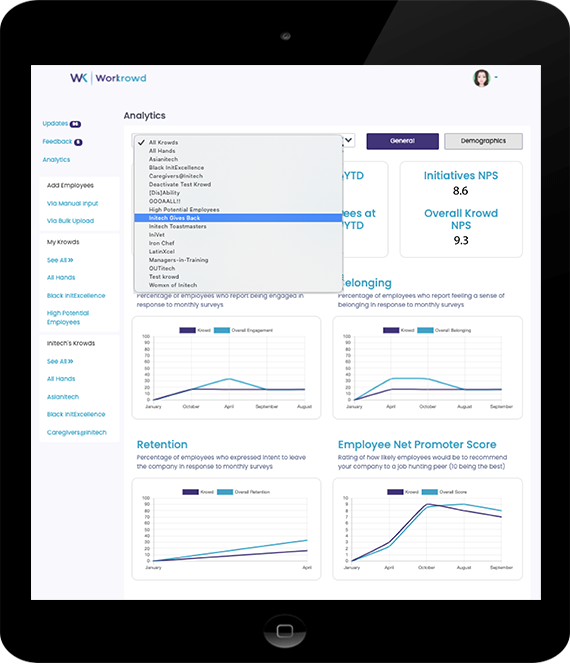In my previous post on the mass return to office, we looked at the impact it’s likely to have on businesses’ DEI efforts. In this post, we’ll look at your return to office policy from a standpoint of how it impacts employee engagement.
While many managers want employees to be present in person, this can be detrimental to employees’ mental and physical health. Which, ultimately, impacts your bottom line.
So, let’s explore how a return to office policy can hurt employee engagement:
Employees can’t take breaks when they need/want to
I can’t sit at a desk for very long. Usually, I’ll write/edit a piece, then take a break. This makes me look like a massive fidget when I work in an office.
But if I don’t take a break regularly, I can’t concentrate.
The longer I sit still for, the harder it gets for me to focus.
This is the reality for many people who are neurodivergent or have chronic health issues. Sitting still becomes physically and/or mentally uncomfortable.
Not to mention it’s terrible for healthy people, too, causing long-term health issues such as chronic back pain.
Back pain is one of the biggest causes of employee sickness in the US. All told, it costs the economy $250 billion per year. Yes, billion.
I thought I needed new glasses when I read that, too.
Back pain is also one of the leading causes of early retirement.
So if someone retires early from it, you lose out on their industry and company knowledge. Plus, you have to spend money hiring and training other employees to fill the gap.
The simplest way to prevent all this? Ensuring employees move more and sit less.
Spending too long staring at a screen can also lead to eye strain and headaches. This then further causes employees to need to take time off to rest. All because they can’t take a screen/desk break when they need to.
Employees need to feel comfortable taking breaks and stretching their legs (and minds) as often as necessary.
But if their boss believes they must be at their desk in the office at all times to do their job, it doesn’t allow for the flexibility people need to move their bodies and maintain their health.
Employees feel less trusted
Forcing employees back into the office when they’ve worked remotely successfully for several years sends a negative message. This extreme return to office policy suggests you don’t trust them to do their job without someone to monitor them in person.
This message that those in charge don’t trust them can damage their confidence. This is especially true when they may feel like they haven’t been doing a good enough job already.
If they’ve worked hard but it’s perceived to not be good enough, the hit to their confidence can cause them to be less productive and may lead to workplace-related depression or anxiety.
All this adds up to employees disengaging, taking long-term sick leave, or leaving altogether.
Over time, this turnover will cause businesses to waste money on hiring that could’ve been saved by working with employees to find a hybrid or remote working policy that suits everyone’s needs.
Underrepresented talent feels they have to conform
Subconsciously, in an office, we judge the people around us. We judge them based on how they speak, act, and even what they wear.
This forces people to conform. Especially in a conservative workforce, or one that isn’t very diverse (even if it’s trying to change).
This subconscious conformity has an impact on how people think over time, too.
When someone doesn’t express their individuality however they want/need to, it can impact how they think, too.
They’re more likely to second-guess their ideas. So they won’t share them.
Eventually, this lack of other perspectives could lead to groupthink.
And that groupthink will reduce employees’ ability to think creatively, innovate, and problem solve because they’re working with just one limited worldview.
Your return to office policy can make it harder for people to speak their minds, especially if they’re constantly immersed in a one-size-fits-all office culture.
Offices are distracting
I delved deeply into how offices can be distracting in my previous post, so I won’t belabor the point here. But the short version is that big, open-plan offices can be distracting.
Office-based working means it’s easier for colleagues to interrupt someone when they’re concentrating. If that person doesn’t drop what they’re doing to talk to their colleague, they risk being perceived as rude.
But what if they were in the middle of a massive breakthrough, and someone coming up to them, unprompted, broke their flow?
It takes us 20 minutes to get back into something after an interruption.
With the amount of distractions we can experience in an office, those 20 minutes can add up. Just think how much lost time your return to office policy can lead to throughout the working day, let alone a week, month, or year.
Commutes can be draining
Commutes can be draining, especially if there’s a lot of traffic or problems with public transport.
When I used to get the tram to work, if there was some sort of tram delay (which happened a lot), it meant I got into work late. I started the day already feeling stressed before I’d even gotten to my desk.
My elevated stress levels meant I was more reactive to my surroundings. As a result, I was less able to concentrate.
Plus, I was worried about whether the tram issues would be fixed before the end of the day. And if they weren’t, how long it would take me to get home. And how little energy I’d have left when I got there.
None of these things are an issue with remote working. Instead, employees get more time to spend on what matters to them and don’t need to stress about their commute.
Office-based working vs employee engagement
While some businesses will always need employees there in person, for many modern companies, there’s just no reason to implement a full-blown return to office policy.
For in-person meetings, in most cases, it’s still cheaper to rent a space once a year, or once a quarter, than have a permanent office space that no one wants to use.
If an employee is among the few who prefer to work in an office, they could always find a nearby co-working space, library, or cafe. This is likely to be closer to them than the office, but they still get to be away from any potential at-home distractions.
Looking to balance the benefits of in-person work with the employee engagement perks of remote? Workrowd can help. Our all-in-one tool suite enables team members to find community no matter where or when they work.
Personalized dashboards ensure everyone is always in the loop, and custom analytics let you track your results in real time. Sound useful? Visit us online to learn more, or drop us a note at hello@workrowd.com.

















